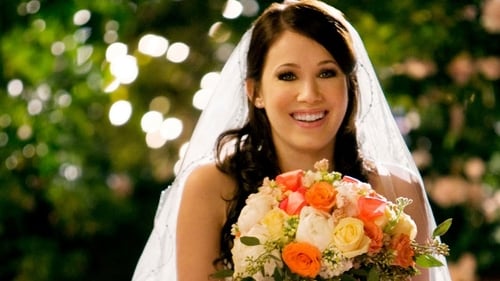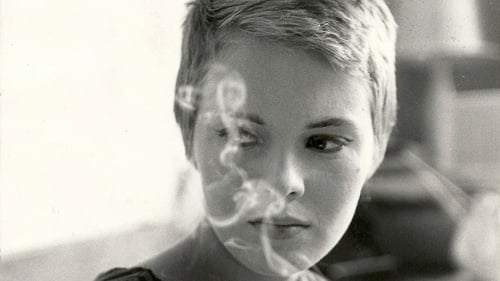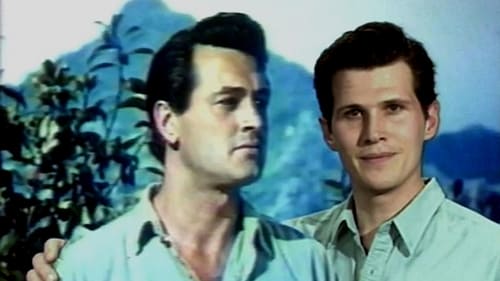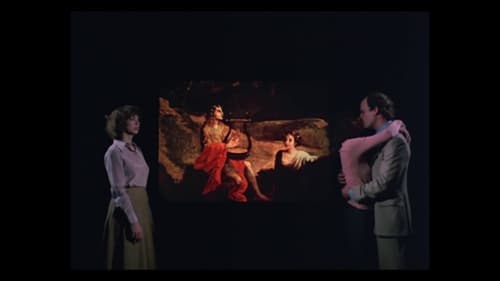
Writer
John Dall was in two great movies - Alfred Hitchcock’s Rope (1948) and Joseph H. Lewis’ Gun Crazy (1950). But, for some reason, it’s not enough for a career. The road to success in show business in lined with many pitfalls. But what do you do when you know the director preferred another actor but had to settle for you? Would it have made a different movie if he had gotten that actor? Let’s find out…

Director
John Dall was in two great movies - Alfred Hitchcock’s Rope (1948) and Joseph H. Lewis’ Gun Crazy (1950). But, for some reason, it’s not enough for a career. The road to success in show business in lined with many pitfalls. But what do you do when you know the director preferred another actor but had to settle for you? Would it have made a different movie if he had gotten that actor? Let’s find out…

Writer
The new film by Mark Rappaport, which spans René Magritte and Michelangelo to Bonnie & Clyde. Let’s mask up to rob a bank! But make sure that you are home before the curfew.

Director
The new film by Mark Rappaport, which spans René Magritte and Michelangelo to Bonnie & Clyde. Let’s mask up to rob a bank! But make sure that you are home before the curfew.

Writer
In the Hollywood's studio system, sets and equipment were used over and over again. Maybe this is why movies seem to have a dream logic today. A feeling of déjà vu as if we have already been there - and sometimes we have.

Director
In the Hollywood's studio system, sets and equipment were used over and over again. Maybe this is why movies seem to have a dream logic today. A feeling of déjà vu as if we have already been there - and sometimes we have.

Director
A biography of Hollywood actors Martin Kosleck and Hans Heinrich von Twardowski, both of whom fled Hitler-era Germany to live a long-lasting relationship.

Writer
Joan Crawford's close-up in Humoresque. Michelangelo's David and Boticelli's "Birth of Venus". Stendhal was overwhelmed by the cultural overstimulation in Florence, which Graziella Magherini described scientifically in 1979 as Stendhal syndrome. Mark Rappaport describes his fascination for the Austrian actor Turhan Bey, who made a career in exotic roles in Hollywood in the 1940s. A very personal essay about the effect of close-ups, the canvas idols of the dream factory and the role of their admirers and fans.

Director
Joan Crawford's close-up in Humoresque. Michelangelo's David and Boticelli's "Birth of Venus". Stendhal was overwhelmed by the cultural overstimulation in Florence, which Graziella Magherini described scientifically in 1979 as Stendhal syndrome. Mark Rappaport describes his fascination for the Austrian actor Turhan Bey, who made a career in exotic roles in Hollywood in the 1940s. A very personal essay about the effect of close-ups, the canvas idols of the dream factory and the role of their admirers and fans.

Director
Near Munich, in Bavaria, Germany, is the Schleißheim Palace, where French filmmaker Alain Resnais shot his film Last Year at Marienbad in 1960. Nearby is the Dachau concentration camp, where thousands of people were killed between 1933 and 1945. An essay about the present and the past, beauty and horror, life and death.

Writer
Near Munich, in Bavaria, Germany, is the Schleißheim Palace, where French filmmaker Alain Resnais shot his film Last Year at Marienbad in 1960. Nearby is the Dachau concentration camp, where thousands of people were killed between 1933 and 1945. An essay about the present and the past, beauty and horror, life and death.

Director
A tribute to actresses, approaching their presence in and out the screen, humanizing the icons. From the Ukrainian Anna Sten to the French Anna Karina, we can see some close-up faces that marked the history of the cinema, and whose demand is more relevant than ever.

Writer
German actor Conrad Veidt is best remembered for playing Nazi Major Strasser in Casablanca. In reality, he was an ardent anti-fascist who left Nazi Germany for Britain, falsely claiming to be Jewish in solidarity with his Jewish wife. Using clips from Veidt’s films, acclaimed director Mark Rappaport imagines the actor narrating his life and career from the silent era—including his leading roles in The Cabinet of Dr. Caligari and The Man Who Laughs through to his Hollywood years where he often played a Nazi.

Director
German actor Conrad Veidt is best remembered for playing Nazi Major Strasser in Casablanca. In reality, he was an ardent anti-fascist who left Nazi Germany for Britain, falsely claiming to be Jewish in solidarity with his Jewish wife. Using clips from Veidt’s films, acclaimed director Mark Rappaport imagines the actor narrating his life and career from the silent era—including his leading roles in The Cabinet of Dr. Caligari and The Man Who Laughs through to his Hollywood years where he often played a Nazi.

Director
Blacklisted gay communist 1940’s character actor Will Geer became Grandpa Walton in the hit series “The Waltons”. How so?

Writer
A video essay from Mark Rappaport about movies in movies, and how the screen watches us just as we watch it.

Director
A video essay from Mark Rappaport about movies in movies, and how the screen watches us just as we watch it.

Writer
The screening room used to be a microcosm of a larger world, filled with churning emotions and explosive temperaments. Welcome to the comfortable world of the private screening rooms where what is on the screen pales in comparison to what happens among the viewers.

Director
The screening room used to be a microcosm of a larger world, filled with churning emotions and explosive temperaments. Welcome to the comfortable world of the private screening rooms where what is on the screen pales in comparison to what happens among the viewers.

Writer
As a teenager, Sergei Eisenstein signed his drawings with "Sir Gay". Mark Rappaport sees clear signs of his sexual preferences throughout the Russian’s film oeuvre. Numerous asides illustrate how Hollywood productions likewise frequently played with nods and winks and typical motifs from gay culture.

Editor
As a teenager, Sergei Eisenstein signed his drawings with "Sir Gay". Mark Rappaport sees clear signs of his sexual preferences throughout the Russian’s film oeuvre. Numerous asides illustrate how Hollywood productions likewise frequently played with nods and winks and typical motifs from gay culture.

Cinematography
As a teenager, Sergei Eisenstein signed his drawings with "Sir Gay". Mark Rappaport sees clear signs of his sexual preferences throughout the Russian’s film oeuvre. Numerous asides illustrate how Hollywood productions likewise frequently played with nods and winks and typical motifs from gay culture.

Producer
As a teenager, Sergei Eisenstein signed his drawings with "Sir Gay". Mark Rappaport sees clear signs of his sexual preferences throughout the Russian’s film oeuvre. Numerous asides illustrate how Hollywood productions likewise frequently played with nods and winks and typical motifs from gay culture.

Director
As a teenager, Sergei Eisenstein signed his drawings with "Sir Gay". Mark Rappaport sees clear signs of his sexual preferences throughout the Russian’s film oeuvre. Numerous asides illustrate how Hollywood productions likewise frequently played with nods and winks and typical motifs from gay culture.

Director
Paul Henreid, perhaps most famous for his roles in CASABLANCA and NOW, VOYAGER became a star at Warner Brothers during World War II, as the exotic lead with the European accent. After the war, his contract was cancelled and he was left to his own devices. He continued acting and also began producing and directing. In his choices, both as actor and director, his work evinces an increasing bitterness and cynicism. A personal statement? Or a result of the unceasing political shifts of the times?

Director
In the movies since he was an infant, Chris Olsen appeared in films by some of the best directors of the 1950's. Even though he never became a famous child actor, he played a pivotal role in some of the most iconic movies of the era. Retired since the age of 14, he looks back on his life as a child actor, trying to find the thread that ties his movie roles together.

Narrator
Jacques Tati and Robert Bresson were very different directors, yet the way they structure a scene is very similar.

Director
Jacques Tati and Robert Bresson were very different directors, yet the way they structure a scene is very similar.

Narrator
A video essay where the author presumes motivations and insights in a fictionalized biography regarding Debra Paget, a contract player for 20th-Century Fox whom they groomed and coached for stardom.

Director
A video essay where the author presumes motivations and insights in a fictionalized biography regarding Debra Paget, a contract player for 20th-Century Fox whom they groomed and coached for stardom.

Director
The great French actor, Marcel Dalio, who has the lead role in Jean Renoir's THE RULES OF THE GAME, also appears in Renoir's GRAND ILLUSION. In both films he plays a character who is Jewish, as Dalio was in real life. In fact, in most of the French films he's in the 1930s, he almost always plays shady characters, informers, blackmailers and gangsters. In other words, he is always "the Jew." When the Nazis invaded France in 1940, he fled to America and appeared in CASABLANCA and TO HAVE AND HAVE NOT. In America, he was no longer the Jew but The Frenchman. He became, in dozens of films, America's idea of a typical Frenchman. His film career has these two strands in which he has two different identities. Are you defined by other people and their perceptions of who you are? Are you always a creation of the way people want to see you? Or can you exist outside of the arbitrary boundaries which are placed on you?

Director
A video essay exploring the frequency and meaning of that particular prop in a wide variety of Sirk movies. Is it a device that traps and keeps women in an artificial world with a limited point of view? Or is it a gateway to the past and the future, and a distorted but nevertheless real vision of the roles that woman are forced to play in society? It's an exploration of the texts and subtexts of commercial films and the subterranean and complicated ways that they affect us and can be read.

Director
Stars of the 1940s and 1950s, were they cast for their mutual affinities or for their commercial appeal? If and when they were re-starred years later, did the magic still work? Did sparks still fly? The movie business, a machine that manufactured romance and desire at the same time that it documented the process of aging. A meditation on youth and beauty, aging and box office.

Director
Max Ophuls is the legendary director and two of his favorite actors are James Mason and Danielle Darrieux. Mason and Darrieux were each in several Ophuls projects but were never together in an Ophuls movie, although they should have been. What might that movie have been like? It's anybody's guess (but cinephiles can dream, can't they?). Somewhere between a historical essay and a speculative one.

Director
An examination of four different films which to varying degrees center on a prop or an object or an item that crosses various characters' lives and passes from hand to hand. The story in each film is, to a certain extent, told from the point of view of the object which can neither speak nor evaluate the actions of the characters whose lives it touches and influences. The films? MME DE..., WINCHESTER '73, VIRDIANA and AU HASARD BALTHAZAR.

Director
BECOMING ANITA EKBERG is an exploration of how the construct of "Anita Ekberg" became an internationally famous sex goddess as a result of the careful cultivation of her image in various movies, both in Hollywood, by Frank Tashlin, and in Europe, by Federico Fellini. It's an exploration of the texts and subtexts of commercial films and the subterranean and complicated ways that they affect us and can be read.

Story
Dr. Evan Cooper is the ideal match on paper and according to her grandmother, Rose Durham and friends, including an equally pushy wedding planner, for florist Laurel Haverford, who fears to be the last of her generation to get married. Yet she keeps dragging her heels after meeting cocky Stephen Banks, who is all wrong on paper but makes her heart leap by pre chemistry.

Director
After a much-publicized but brief stint in Hollywood, Jean Seberg was selected by Jean-Luc Godard to star in BREATHLESS. It was to become the legendary actress’s best-remembered role. This 2007 video essay by Mark Rappaport, director of the 1995 film FROM THE JOURNALS OF JEAN SEBERG, reveals the true story behind her iconic face.

Writer
Mark Rappaport's look at the life and work of actor John Garfield.

Director
Mark Rappaport's look at the life and work of actor John Garfield.

Writer
A film scrapbook, images, phrases from our past, hiding their meanings behind veils. Let's lift those veils, one by one, to find how images, at one time seeming innocent, have revealed, after decades, to have homosexual overtones.

Director
A film scrapbook, images, phrases from our past, hiding their meanings behind veils. Let's lift those veils, one by one, to find how images, at one time seeming innocent, have revealed, after decades, to have homosexual overtones.

Producer
Mark Rappaport's creative bio-pic about actress Jean Seberg is presented in a first-person, autobiographical format. He seamlessly interweaves cinema, politics, American society and culture, and film theory to inform, entertain, and move the viewer. Seberg's many marriages, as well as her film roles, are discussed extensively. Her involvement with the Black Panther Movement and subsequent investigation by the FBI is covered. Notably, details of French New Wave cinema, Russian Expressionist (silent) films, and the careers of Jane Fonda, Vanessa Redgrave, and Clint Eastwood are also intensively examined. Much of the film is based on conjecture, but Rappaport encourages viewers to re-examine their ideas about women in film with this thought-provoking picture.

Writer
Mark Rappaport's creative bio-pic about actress Jean Seberg is presented in a first-person, autobiographical format. He seamlessly interweaves cinema, politics, American society and culture, and film theory to inform, entertain, and move the viewer. Seberg's many marriages, as well as her film roles, are discussed extensively. Her involvement with the Black Panther Movement and subsequent investigation by the FBI is covered. Notably, details of French New Wave cinema, Russian Expressionist (silent) films, and the careers of Jane Fonda, Vanessa Redgrave, and Clint Eastwood are also intensively examined. Much of the film is based on conjecture, but Rappaport encourages viewers to re-examine their ideas about women in film with this thought-provoking picture.

Director
Mark Rappaport's creative bio-pic about actress Jean Seberg is presented in a first-person, autobiographical format. He seamlessly interweaves cinema, politics, American society and culture, and film theory to inform, entertain, and move the viewer. Seberg's many marriages, as well as her film roles, are discussed extensively. Her involvement with the Black Panther Movement and subsequent investigation by the FBI is covered. Notably, details of French New Wave cinema, Russian Expressionist (silent) films, and the careers of Jane Fonda, Vanessa Redgrave, and Clint Eastwood are also intensively examined. Much of the film is based on conjecture, but Rappaport encourages viewers to re-examine their ideas about women in film with this thought-provoking picture.

Writer
Shot in high-definition video using rear-screen process plates from classic Warner Bros. films noirs. A young man (in color) searches for his past through black-and-white scenes from "The Big Sleep," "Mildred Pierce," and "Strangers on a Train."

Director
Shot in high-definition video using rear-screen process plates from classic Warner Bros. films noirs. A young man (in color) searches for his past through black-and-white scenes from "The Big Sleep," "Mildred Pierce," and "Strangers on a Train."

Editor
In this revisionist documentary, actor Eric Farr re-creates the character of Rock Hudson in order to take a look back at his films. It compares the actor's screen (and public) image with his real life and shows certain scenes, lines and situations in his films to insinuate that Hudson may have been gay.

Producer
In this revisionist documentary, actor Eric Farr re-creates the character of Rock Hudson in order to take a look back at his films. It compares the actor's screen (and public) image with his real life and shows certain scenes, lines and situations in his films to insinuate that Hudson may have been gay.

Writer
In this revisionist documentary, actor Eric Farr re-creates the character of Rock Hudson in order to take a look back at his films. It compares the actor's screen (and public) image with his real life and shows certain scenes, lines and situations in his films to insinuate that Hudson may have been gay.

Director
In this revisionist documentary, actor Eric Farr re-creates the character of Rock Hudson in order to take a look back at his films. It compares the actor's screen (and public) image with his real life and shows certain scenes, lines and situations in his films to insinuate that Hudson may have been gay.

Director
A separated couple try to keep in touch through postcards of typically "American" sights: motels, monuments, parks; but their postcards cross in the mail. Misunderstandings arise; passion subsides; romance fades... Yet the postcards keep on coming.

Editor
Nine Manhattanites receive a chain letter. Depending on their decision to either pass the letter on or to break the chain, the various characters can encounter romance, fulfillment -- and sudden death.

Producer
Nine Manhattanites receive a chain letter. Depending on their decision to either pass the letter on or to break the chain, the various characters can encounter romance, fulfillment -- and sudden death.

Writer
Nine Manhattanites receive a chain letter. Depending on their decision to either pass the letter on or to break the chain, the various characters can encounter romance, fulfillment -- and sudden death.

Director
Nine Manhattanites receive a chain letter. Depending on their decision to either pass the letter on or to break the chain, the various characters can encounter romance, fulfillment -- and sudden death.

In Mark Rappaport: The TV Spin-off, the filmmaker conducts a guided tour of his work that explains everything... and nothing. Rappaport shows himself to be the cinematic equivalent of Penn and Teller.

Director
In Mark Rappaport: The TV Spin-off, the filmmaker conducts a guided tour of his work that explains everything... and nothing. Rappaport shows himself to be the cinematic equivalent of Penn and Teller.

Editor
One of Mark Rappaport's later narratives (which won the Gold Hugo for Best First Feature at the Chicago International Film Festival in 1979), Impostors is an off-kilter comedy/mystery focused on two magicians trying to find Egyptian jewels, their promiscuous assistant, and a man who loves the assistant.

Writer
One of Mark Rappaport's later narratives (which won the Gold Hugo for Best First Feature at the Chicago International Film Festival in 1979), Impostors is an off-kilter comedy/mystery focused on two magicians trying to find Egyptian jewels, their promiscuous assistant, and a man who loves the assistant.

Director
One of Mark Rappaport's later narratives (which won the Gold Hugo for Best First Feature at the Chicago International Film Festival in 1979), Impostors is an off-kilter comedy/mystery focused on two magicians trying to find Egyptian jewels, their promiscuous assistant, and a man who loves the assistant.

Editor
An experimental drama that spins the tale of a woman, her sister, and the man who completes the triangle. Told through such fertile sources as grand opera, classical painting, and Victorian melodrama.

Producer
An experimental drama that spins the tale of a woman, her sister, and the man who completes the triangle. Told through such fertile sources as grand opera, classical painting, and Victorian melodrama.

Writer
An experimental drama that spins the tale of a woman, her sister, and the man who completes the triangle. Told through such fertile sources as grand opera, classical painting, and Victorian melodrama.

Director
An experimental drama that spins the tale of a woman, her sister, and the man who completes the triangle. Told through such fertile sources as grand opera, classical painting, and Victorian melodrama.

Editor
Mark Rappaport's off center soap opera parody concerning several characters including a barber, his wife, and a pair of incestuous twins.

Writer
Mark Rappaport's off center soap opera parody concerning several characters including a barber, his wife, and a pair of incestuous twins.

Director
Mark Rappaport's off center soap opera parody concerning several characters including a barber, his wife, and a pair of incestuous twins.

Editor
An irreverent take on Mozart's relations with the three Weber sisters: Louisa, whom he loved, but who didn't love him; Constanza, whom he loved and married; and Sophie, who loved him but whom he didn't love. An anthology of arias from Mozart's operas, in which art comments on life through a cheeky use of back-projection and miming to records.

Producer
An irreverent take on Mozart's relations with the three Weber sisters: Louisa, whom he loved, but who didn't love him; Constanza, whom he loved and married; and Sophie, who loved him but whom he didn't love. An anthology of arias from Mozart's operas, in which art comments on life through a cheeky use of back-projection and miming to records.

Writer
An irreverent take on Mozart's relations with the three Weber sisters: Louisa, whom he loved, but who didn't love him; Constanza, whom he loved and married; and Sophie, who loved him but whom he didn't love. An anthology of arias from Mozart's operas, in which art comments on life through a cheeky use of back-projection and miming to records.

Director
An irreverent take on Mozart's relations with the three Weber sisters: Louisa, whom he loved, but who didn't love him; Constanza, whom he loved and married; and Sophie, who loved him but whom he didn't love. An anthology of arias from Mozart's operas, in which art comments on life through a cheeky use of back-projection and miming to records.

Producer
In Rappaport’s dazzling and bizarre feature-length debut, he focuses on states of imaginative possession and dispossession, demonstrating how impossible it is to separate fantasies, dreams, and realities.

Writer
In Rappaport’s dazzling and bizarre feature-length debut, he focuses on states of imaginative possession and dispossession, demonstrating how impossible it is to separate fantasies, dreams, and realities.

Director
In Rappaport’s dazzling and bizarre feature-length debut, he focuses on states of imaginative possession and dispossession, demonstrating how impossible it is to separate fantasies, dreams, and realities.

Producer
An adroit expansion on the notion of a "blue" movie, Mark Rappaport's early short BLUE STREAK contrasts the rarified realm of classical composition with an unspoken assortment of words predisposed to human sexuality, all layered over footage of a room filled with naked women and men. At the intersection of high art and low art, Rappaport skillfully dissects the absurdity of such distinctions and brings notions otherwise undiscussed in polite society to the forefront.

Director
An adroit expansion on the notion of a "blue" movie, Mark Rappaport's early short BLUE STREAK contrasts the rarified realm of classical composition with an unspoken assortment of words predisposed to human sexuality, all layered over footage of a room filled with naked women and men. At the intersection of high art and low art, Rappaport skillfully dissects the absurdity of such distinctions and brings notions otherwise undiscussed in polite society to the forefront.

Director
Mark Rappaport's first film—a study of a young man named Gerald Mur.

Writer
Scenes from New York in the 1960s. Four young people, friendship, jealousy, separation.

Director
Scenes from New York in the 1960s. Four young people, friendship, jealousy, separation.













